In the serene landscape of a small coastal harbour, Elliott Architects have masterfully reimagined a new residence, aptly named House on a Wharf, which stands as a modern testament to the history and resilience of its site. Occupying roughly the same footprint as the original early 20th-century building, this new structure pays homage to the past while embracing contemporary design and sustainability.
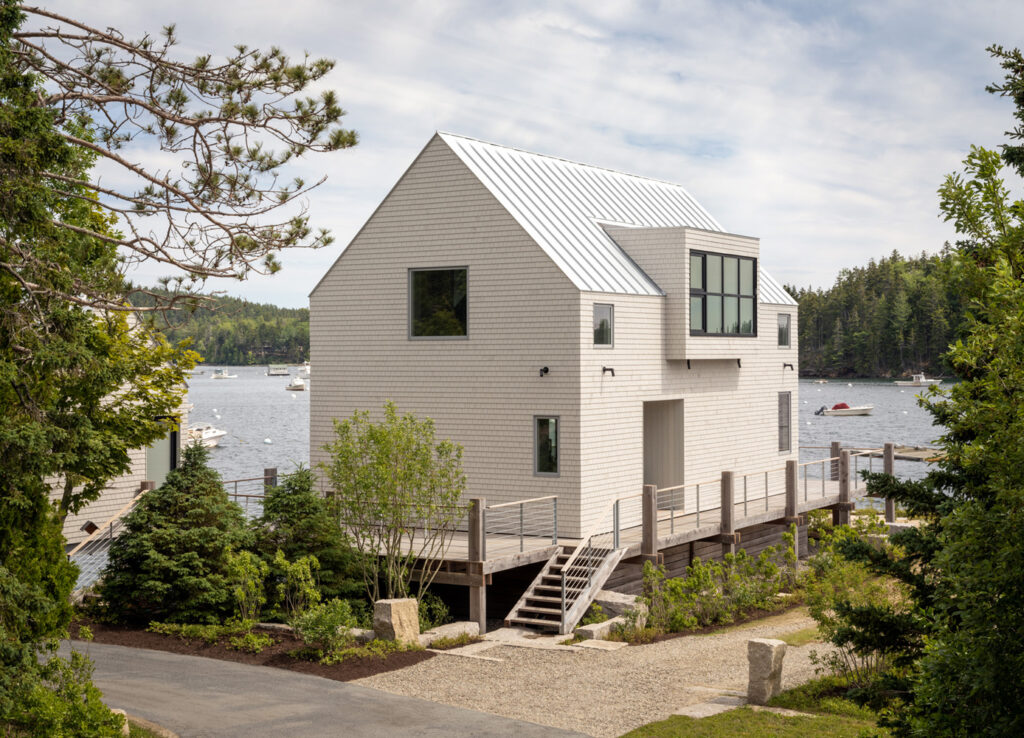
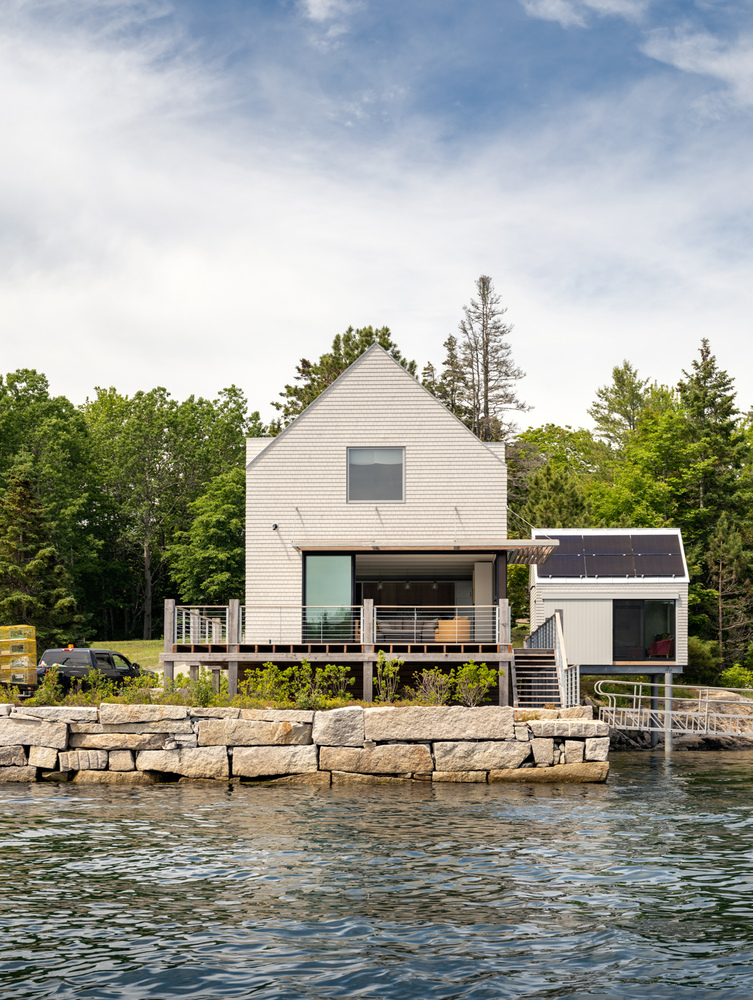
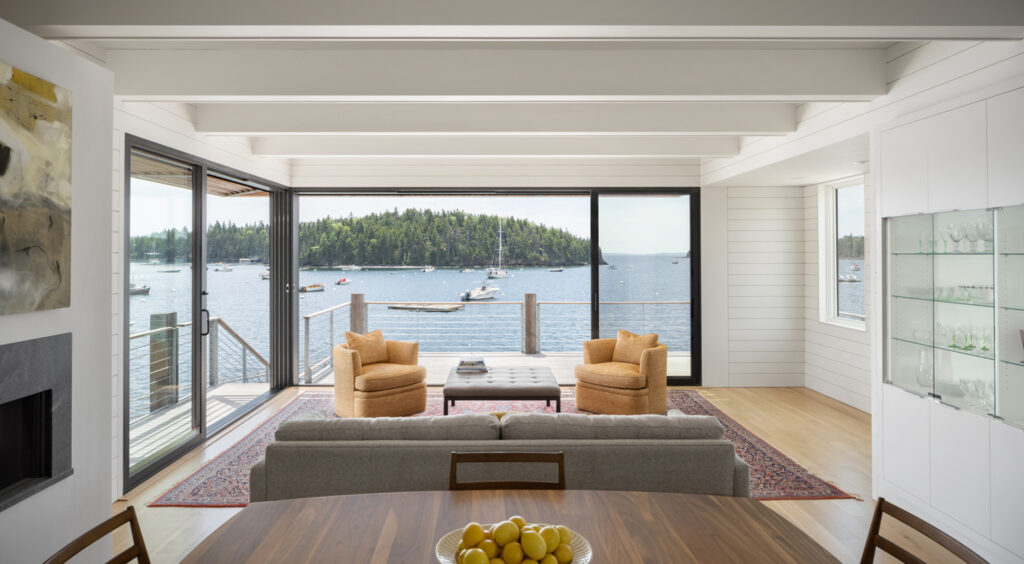
The original building, which once served a myriad of purposes—from servicing coastal steamers to functioning as an apartment house, laundromat, and summer home—has been replaced with a residence that is both robust and elegant. Elliott Architects faced the challenge of not only preserving the historical essence of the site but also ensuring its future against the elements. To achieve this, the stone wharf was raised, and the new house was strategically placed on piers to comply with floodplain regulations. This elevation ensures that the living quarters are well above the high tides that once threatened the old structure, often washing into its living room.
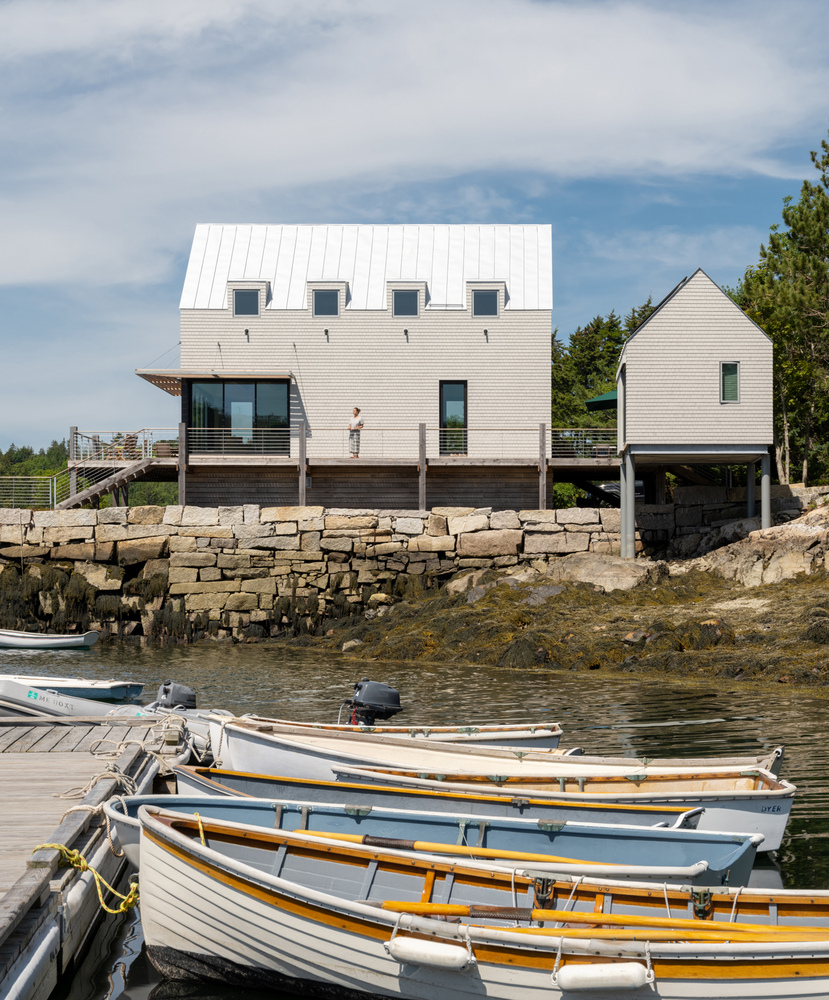

One of the most striking features of House on a Wharf is the deck that wraps around the first-floor perimeter. This design element not only grounds the new building but also creates expansive outdoor spaces that capitalize on the breathtaking coastal views. The deck seamlessly connects the main residence to a tiny guest house and studio, which is suspended on piles above the water, offering a unique and intimate connection with the surrounding environment.
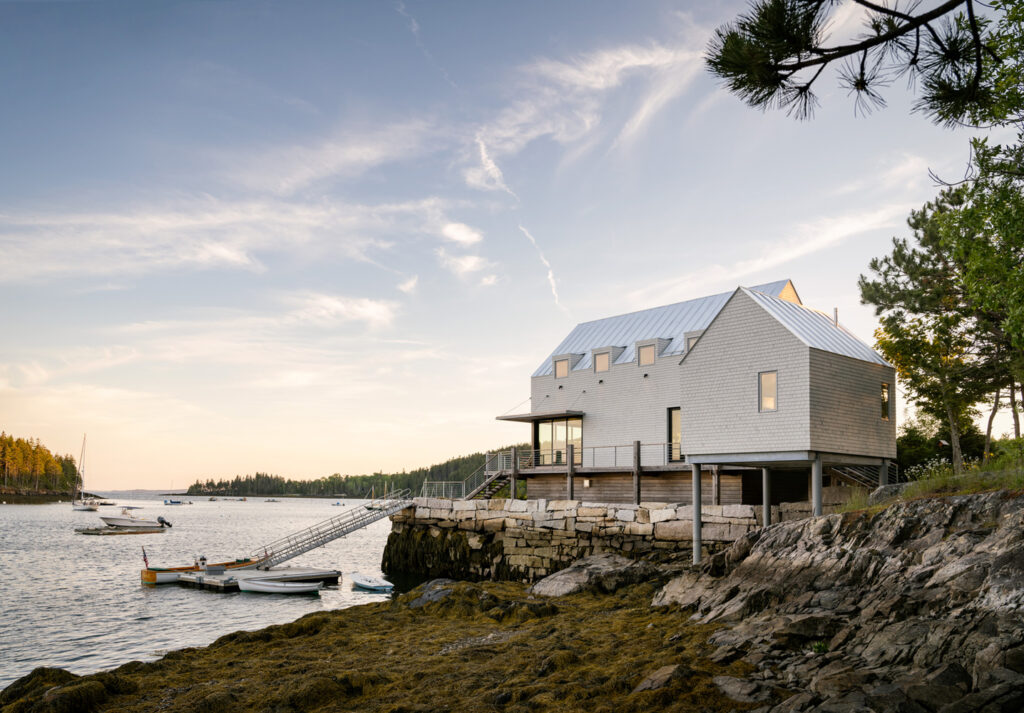
Sustainability is at the forefront of this architectural marvel. Photovoltaic panels installed on the guest house significantly reduce electrical consumption, showcasing Elliott Architects’ commitment to eco-friendly design. The residence is heated and cooled using efficient heat pumps, and its orientation maximizes passive solar heating. The enhanced thermal envelope, which includes continuous insulation around the entire perimeter and blown-in insulation in the wall and roof cavities, ensures optimal energy efficiency and comfort year-round.
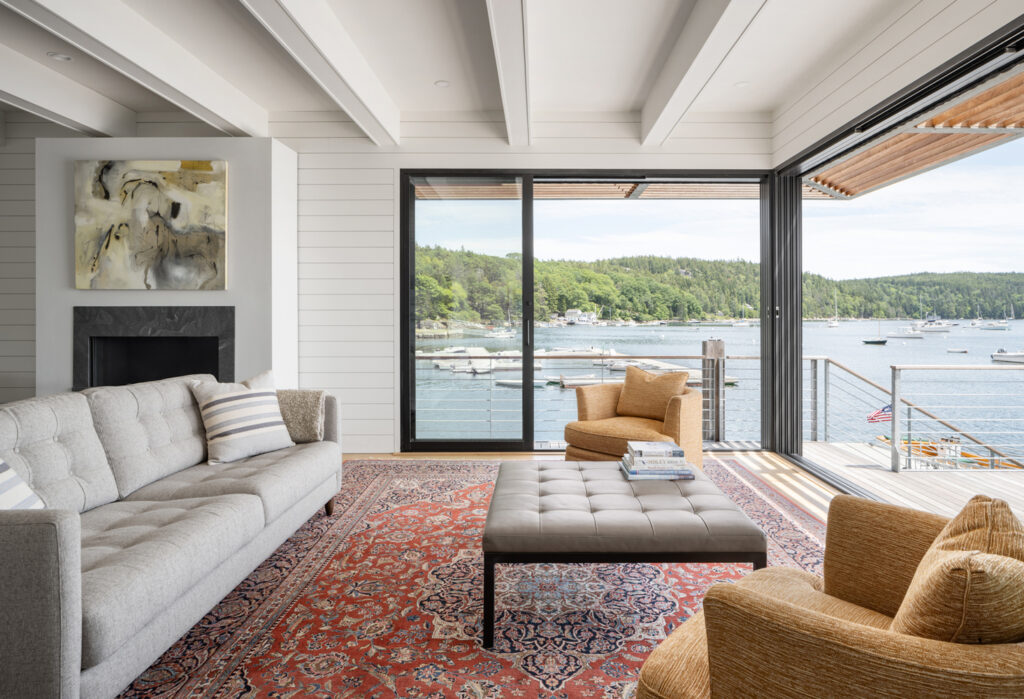
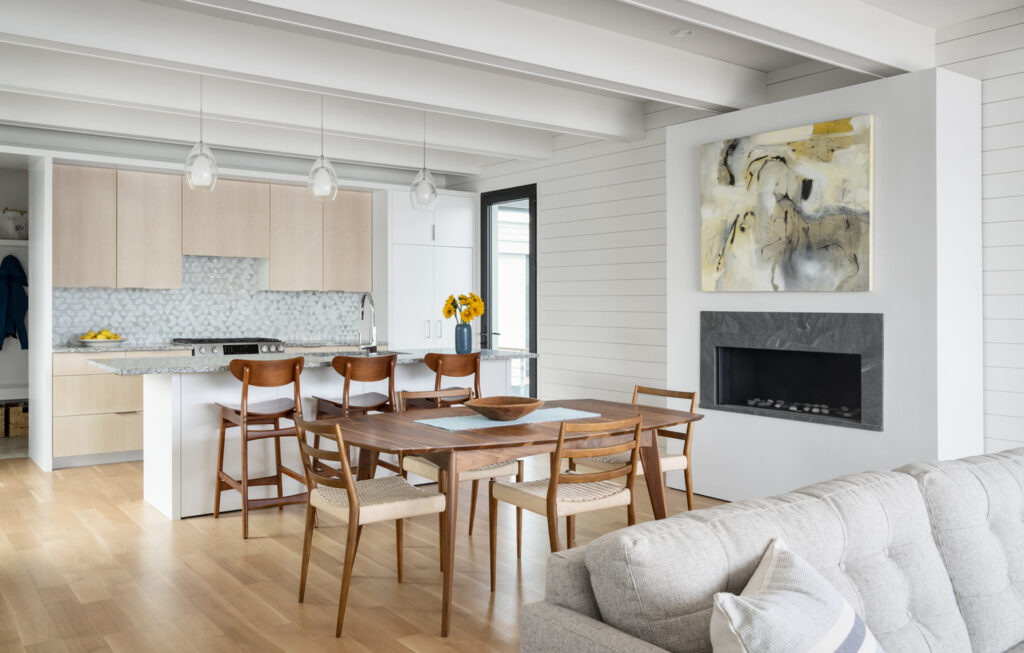
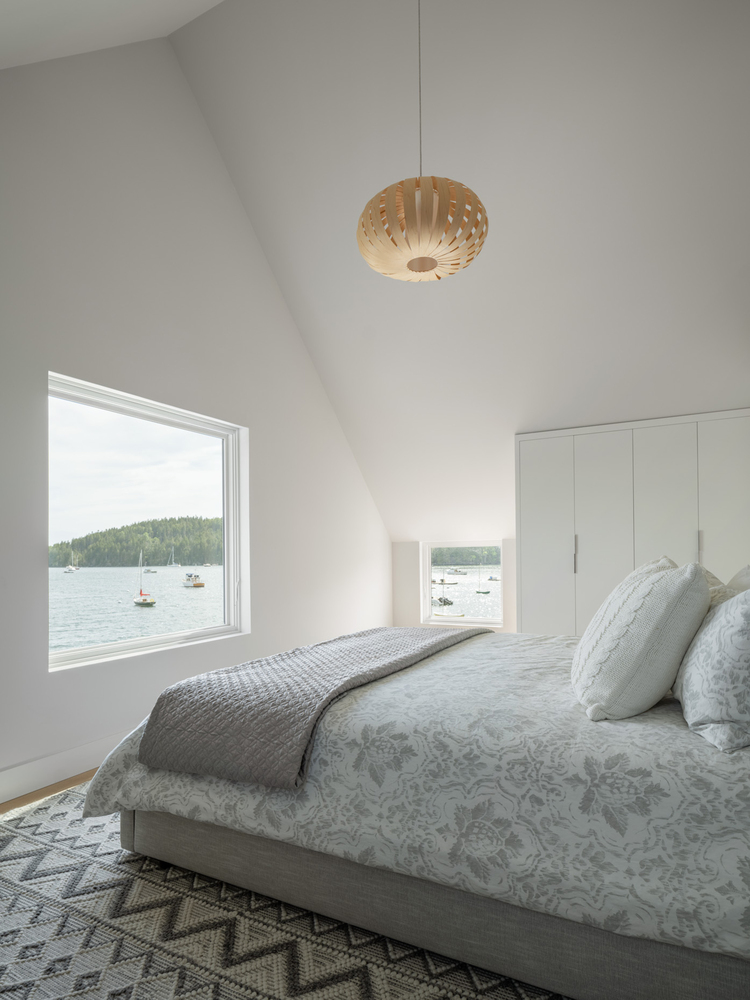
The aesthetic of House on a Wharf is a harmonious blend of modernity and tradition. The clean lines and minimalist design are complemented by the natural materials and thoughtful integration with the site. The elevated structure, supported by piers, evokes a sense of lightness and resilience, while the raised stone wharf and expansive deck root the building firmly in its historical context.
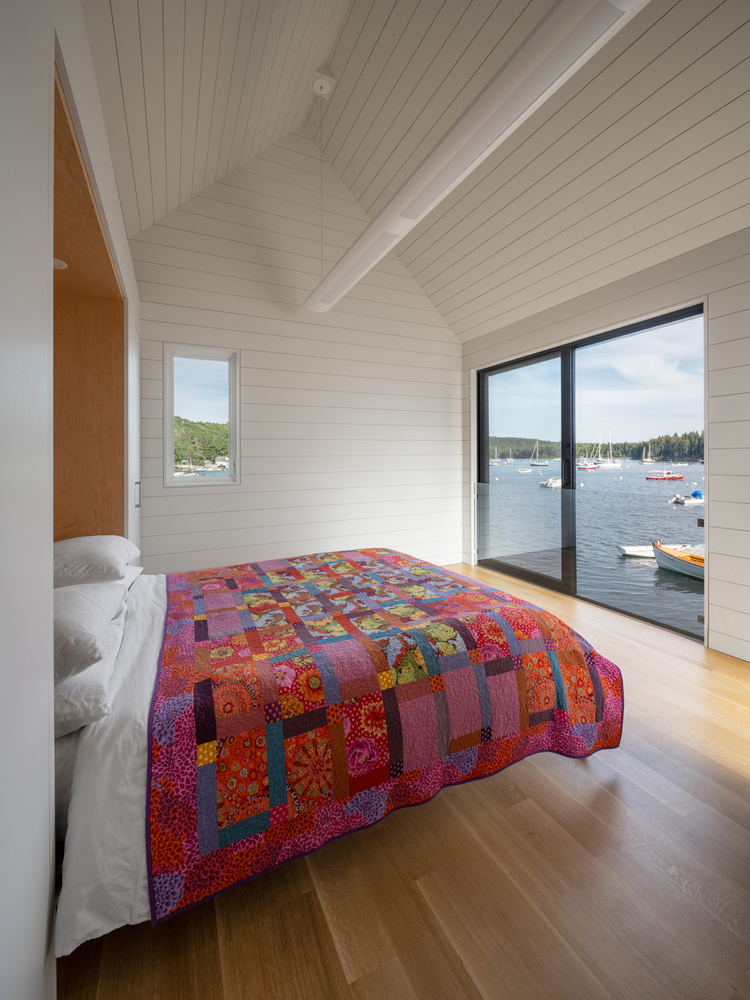
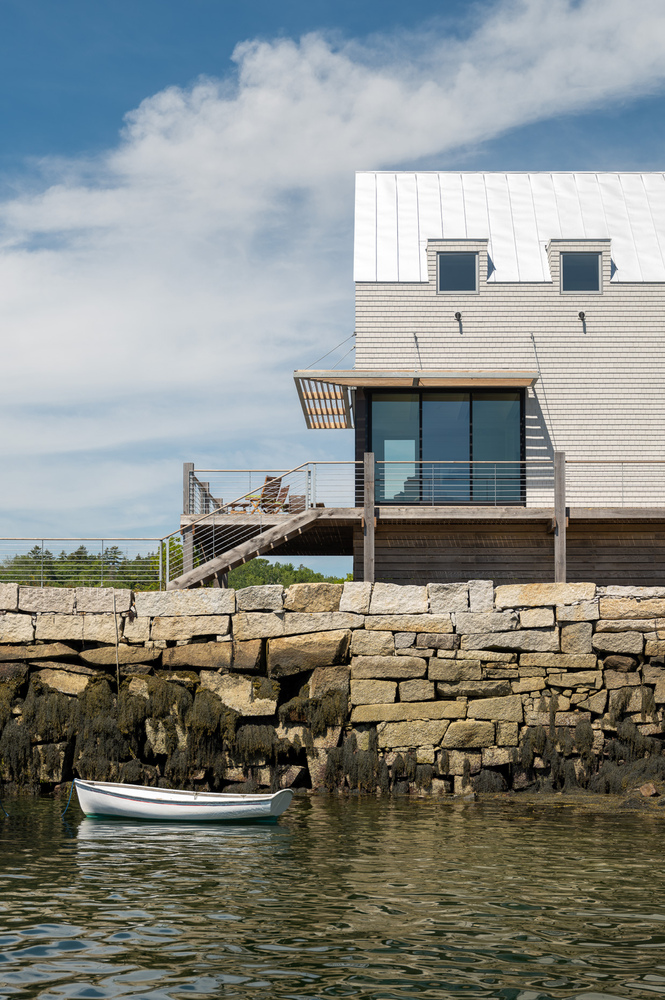
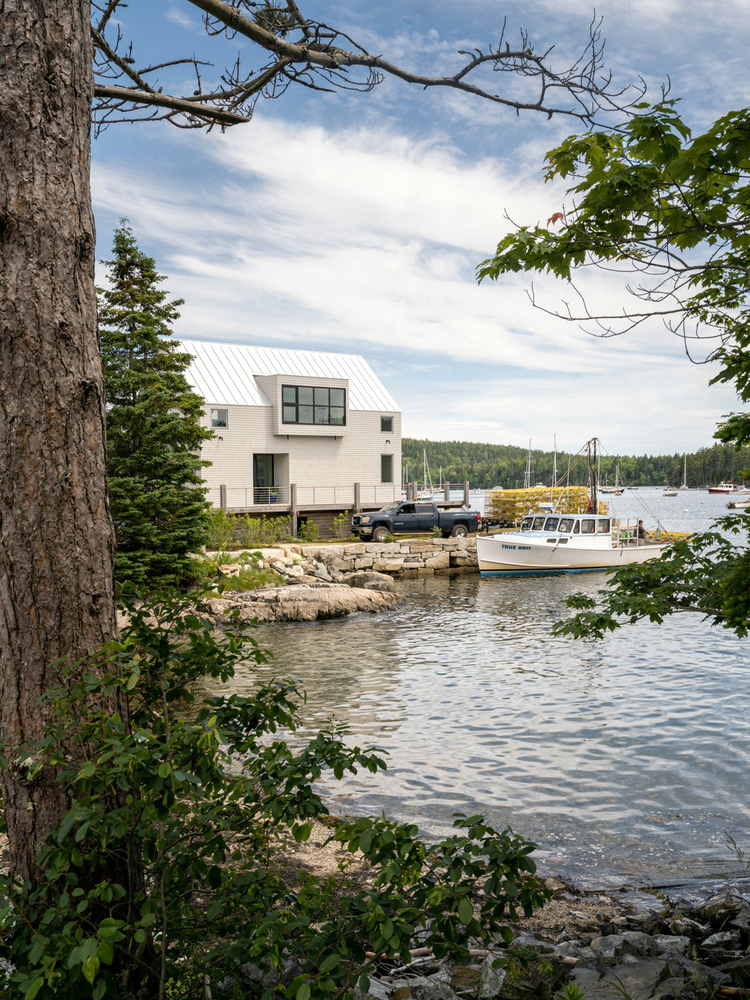
In conclusion, House on a Wharf by Elliott Architects is a stunning example of how modern architecture can honour the past while looking forward to the future. This residence not only preserves the historical significance of its site but also introduces innovative design and sustainable living practices. It’s a place where history and modernity coexist, offering a tranquil and resilient retreat by the coast.
- Rustic Canyon Residence: A Modern Treehouse Rooted in Neutra’s Legacy - March 27, 2025
- 8 of the Best Horror Books for your Reading List in 2025 - March 27, 2025
- All the best bits from the new Howler Brothers JT Van Zandt Collection - March 27, 2025



